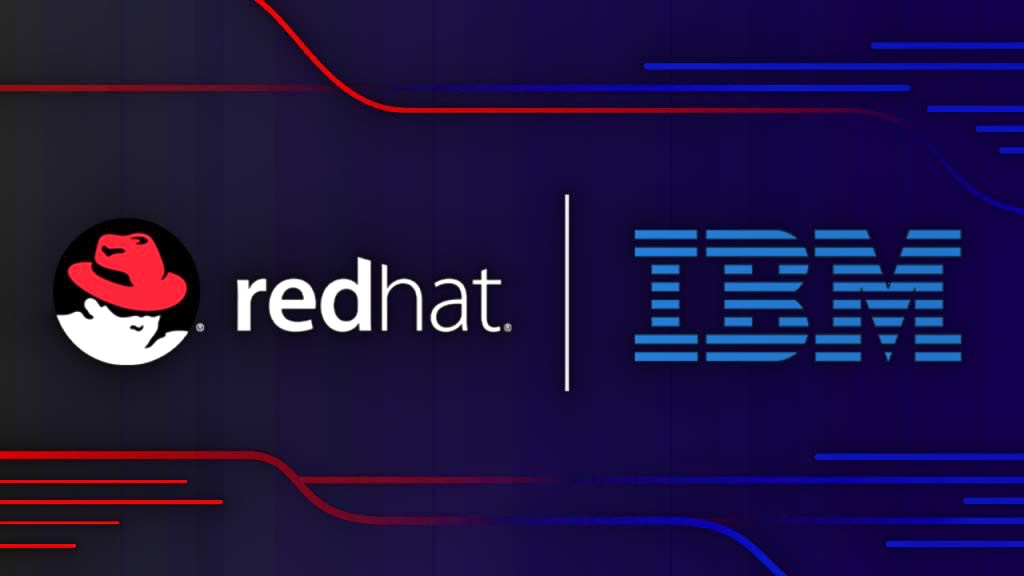IBM announced that it has transformed its software portfolio to be cloud-native and optimized it to run on Red Hat OpenShift. Enterprises can now build mission-critical applications once and run them on all leading public clouds, including AWS, Microsoft Azure, Google Cloud Platform, Alibaba and IBM Cloud and on private clouds.
The new cloud-native capabilities will be delivered as pre-integrated solutions called IBM Cloud Paks. The IBM-certified and containerized software will provide a common operating model and common set of services – including identity management, security, monitoring and logging – and are designed to improve visibility and control across clouds together with a unified and intuitive dashboard.
Highlights
- IBM software products now cloud-native for public and private clouds
- Enterprises can now build mission-critical applications once and run them on all leading public clouds or private clouds
- Sprint, Associated Bank, Primerica, Ilmarinen and Fiducia & GAD IT AGturn to IBM and Red Hat to transform their business for the cloud era
IBM also announced today:
- Red Hat OpenShift on IBM Cloud: A flexible, fully-managed service of OpenShift on IBM’s public cloud – deployable in one-click with automated resiliency, data compliance, and security – to help enterprises modernize and migrate to a hybrid cloud infrastructure.
- Red Hat OpenShift on IBM Z and LinuxONE: IBM will bring Red Hat OpenShift to their enterprise systems, IBM Z and LinuxONE, which collectively power more than 30 billion transactions a day globally. IBM already supports OpenShift on its Power Systems and Storage.
- Consulting and technology services for Red Hat: New IBM services delivered by the world’s largest team of Red Hat certified-consultants and more than 80,000 cloud application services practitioners to help clients advise, move, build, and manage their workloads to cloud environments.
The software and services announced today, which include more than 100 products from across IBM’s expansive software portfolio optimized to run on Red Hat OpenShift, will be delivered on IBM’s hybrid multicloud platform. It is built on open source technologies, including Red Hat OpenShift, the industry’s most comprehensive enterprise Kubernetes platform, and Red Hat Enterprise Linux, the world’s leading enterprise Linux platform. As a result, clients can select the best architecture and approach to address the most critical application, data and workload requirements for their business.
“IBM is unleashing its software from the data center to fuel the enterprise workload race to the cloud. This will further position IBM the industry leader in the more than $1 trillion dollar hybrid cloud opportunity,” said Arvind Krishna, senior vice president, Cloud and Cognitive Software, IBM. “We are providing the essential tools enterprises need to make their multi-year journey to cloud on common, open standards that can reach across clouds, across applications and across vendors with Red Hat.”
“Red Hat is unlocking innovation with Linux-based technologies, including containers and Kubernetes, which have become the fundamental building blocks of hybrid cloud environments,” said Jim Whitehurst, president and CEO, Red Hat. “This open hybrid cloud foundation is what enables the vision of any app, anywhere, anytime. Combined with IBM’s strong industry expertise and supported by a vast ecosystem of passionate developers and partners, customers can create modern apps with the technologies of their choice and the flexibility to deploy in the best environment for the app – whether that is on-premises or across multiple public clouds.”
Transforming IBM software to support mission-critical apps anywhere
The Cloud Paks provide full software support and help protect the entire stack—from hardware to applications – to help clients rapidly migrate, integrate and modernize mission-critical applications on any cloud. They are easily deployed, delivered as packages tailored for specific client use cases, and adding a consumption-based pricing model.
The first five IBM Cloud Paks are available today and include:
- Cloud Pak for Data to simplify and automate how organizations deliver insights from their data and provide an open and extensible architecture to virtualize data for AI 500 percent faster[1].
- Cloud Pak for Applications to help businesses modernize, build, deploy and run applications. It helped IBM customers in the fintech sector reduce development time by 84 percent[2].
- Cloud Pak for Integration to help integrate apps, data, cloud services and APIs. It is designed to eliminate 33 percent of integration costs[3].
- Cloud Pak for Automation to help transform business processes, decisions and content. A banking client was able to reduce manual processes by 80 percent[4].
- Cloud Pak for Multicloud Management to provide multicloud visibility, governance and automation. It was able to help clients reduce operational expenses of supporting large-scale cloud-native environments by 75 percent[5].
Clients building the future with IBM and Red Hat
Across industries, businesses can leverage IBM’s hybrid multicloud platform and Red Hat OpenShift-enabled IBM software to help transform their organizations from the inside out to increase their competitive advantage.
Sprint turned to the IBM Cloud Pak for Data to help it better understand and prepare for upcoming network technologies, like 5G.
“We tapped into the IBM Cloud Pak for Data to take advantage of Watson Studio and Machine Learning,” said Michele Gehl, vice president, OSS Applications & Operations, at Sprint. “With this container-based platform, we’re able to build models quickly to generate insights about client-facing issues from diverse datasets and respond accordingly.” Gehl said the new Cloud Pak for Data System appears to be a great way to add AI into an existing infrastructure quickly.
Associated Bank is adopting IBM Cloud Pak for Data System, for rapid deployment and scaling of AI. Initial projects the bank is planning to work on include a new Customer 360 system for improving client experiences and a new governed data dashboard for improved analytics results.
“One of the great things about the Cloud Pak for Data System is the speed with which we’ll be able to launch and scale our analytics platform,” said Steve Lueck, Vice President, Data Management, at Associated Bank, which is in the process of deploying several new systems. “The integrated stack contains what we need to improve data quality, catalog our data assets, enable data collaboration, and build/operationalize data sciences. We’re able to move quickly with design, test, build and deployment of new models and analytical applications.”
Primerica collaborated with IBM to optimize the client experience and modernize its mission-critical workloads.
“As a leading financial services provider to middle-income families throughout North America, Primerica has been on a journey to modernize our applications and rapidly deliver new services with the innovations our clients expect,” said Barry Pellas, CTO and EVP, Primerica. “The IBM platform is a key enabler for our hybrid cloud strategy, allowing us to mix public and private clouds to deliver exceptional experiences quickly, while keeping our data secure.”
Ilmarinen, an insurance company based in Finland, is using multiple IBM Cloud Paks to modernize its business and optimize the use of data.
“The ability to run enterprise-grade, containerized solutions, is a key part of our application modernization strategy,” said Jani Itkonen, chief technical architect, Ilmarinen Mutual Pension Insurance Company. “It allows us to change and scale as needed and keeps us positioned to always deliver new capabilities in a faster, more secure way.”
Fiducia & GAD IT AG, an IT service provider for the banking industry, implemented RedHat OpenShift to transform its customer experience.
“Fiducia & GAD IT AG is using Red Hat OpenShift as a base container platform to enhance the customer experience and transform parts of their core banking environment to become more agile and customer centric,” said Birgit Frohnhoff, CIO, Fiducia & GAD IT AG. “We’re excited to learn more about the potential of IBM’s Cloud Pak for Data to enhance our analytical, big data and machine learning capabilities.”
References
[1] Performance measurements were gathered within a controlled test environment at IBM Silicon Valley Labs using IBM data virtualization against various 100TB data sources. The measurements taken in May 2019 and performance gains are compared to IBM federation.
[2] Responses from IBM customers surveyed and Ovum’s own data indicate that the speed to market can be reduced by as much as 84%, depending on which market is being evaluated. Figure 1 shows the reduction in time to market in the fintech sector achieved using IBM Cloud Private, which was on average a drop from 180 days to 15 days. Sources: http://ibm.biz/Ovum-WP (Page 6)
[3] Based on customer experience and Total Economic Impact methodology developed by Forrester Research, Inc. (The Total Economic Impact of an API Management Solution, February 2017), which includes the following statements on development savings “A 30% improvement in time-to-market for internal development of data and analytics projects” “A 35% improvement in time-to-market projects by public developers consuming APIs” This includes a breakdown to cost savings specifically that is much higher than what we are claiming here. The study surveyed IBM customers.
[4] Forrester: The Total Economic Impact™ Of The IBM Automation Platform For Digital Business – “With the Operational Decision Manager, the bank was able to set up workflows that enable faster approval of 80% of all loan requests. “Some loan approval processes were taking days, sometimes four to 10 days depending on the exceptions; now 80% of our loan applications flow straight through and are done in seconds.” Source – https://www.ibm.com/downloads/cas/O5A0BD4R
[5] Reducing the operational expense of supporting large-scale dynamic cloud-native environments is a key value proposition of container management platforms. The survey discovered that, on average, organizations achieved a 75% reduction in operational overhead in managing the cloud-native environment. This operational efficiency gain comes in three main areas identified by the survey where using a container management platform approach to cloud-native management yields savings.
Sources: http://ibm.biz/Ovum-WP (Page 6)









